Small fish get no respect. While heavyweights like tuna and salmon get all the glory as healthy, omega-3-packed fish, many people pass right by the smaller guys like sardines, anchovies, mackerel and herring without even noticing them.
Some diners look down their noses at these small, oily offerings, but prepared properly, they are surprisingly delectable — and nutritious. Rich in omega-3s (and very low in the heavy metals that tend to accumulate in larger fish like tuna), they are widely available in shelf-stable cans and jars, making them easy to keep on hand for impromptu meals and snacks — including quick spreads for unexpected guests.
Try adding some sardines to a garlicky tomato sauce, for example, or top some crackers with a simple fish pâté and a little mustard. Peruse the next few pages for more easy ways to enjoy these accessible seafoods. Once you discover just how tasty and versatile canned fish can be, you just might decide to join the growing ranks of “a-fishyonados” and sardinistas who are kicking their tuna habit.
All About Little Fish
Anchovies
Types/Varieties: Anchovies are small, saltwater forage fish. There are more than 140 species of anchovies, but the ones we’re most familiar with in the United States come from the Mediterranean and southern European coastlines.
Taste/Flavor: Curing anchovies in brine is a traditional method for preserving them, and it’s what gives the fish — which is quite mild when fresh — its intense flavor and dark color. When pickled in vinegar, a Spanish tradition, anchovies are milder and their flesh is white. To alleviate some of the saltiness, you can soak anchovies in cool water for about 30 minutes, then pat dry.
How to Buy: Usually sold as fillets, anchovies come packed in salt or canned in oil. You can also buy them jarred or in tubes as a paste. The paste is easy to add to pasta sauces, where anchovies are famous for adding depth and a much-sought-after umami quality.
How to Store: Canned anchovies can be kept at room temperature for up to a year. Once opened, they can be stored in the refrigerator for up to two months if covered with oil in a separate container and sealed tight.
Sardines
Types/Varieties: Sardines are small, saltwater forage fish. More than 20 species of fish may be classified as sardines (including young herring).
Taste/Flavor: Salty like the sea and slightly nutty, canned sardines have a dry, crumbly, meaty texture. Because they are so small, their delicate skin and bones — which are softened during the curing process — can be safely chewed and swallowed and are wonderfully rich in calcium.
How to Buy: Buy sardines packed in good-quality olive oil. (Avoid sardines in other kinds of oil, like soybean and canola.) You can also find terrific canned sardines in olive oil with spices like peppers and cloves, and in special sauces like pesto or tomato.
How to Store: Store canned sardines in the cupboard, preferably a cool one. Turn the can occasionally to make sure all parts of the sardines are well moistened. Canned sardines have a long shelf life, often years, but be sure to check the expiration date.
MacKerel
Types/Varieties: Mackerel, a predatory fish, is a relative of the much larger tuna family. There are 21 species of mackerel, which are found in the Atlantic Ocean off both the North American and European coastlines.
Taste/Flavor: With delicate, juicy meat, mackerel has a robust flavor that some people find “fishy,” but it’s worth experimenting with different types and brands (and with different preparations) before making your own judgment. This fish tends to be more popular in Europe than in the United States.
How to Buy: Usually pickled or packed in oil, mackerel can also be purchased smoked. Canned mackerel can be substituted for canned salmon in most recipes.
How to Store: Store canned mackerel in the cupboard, preferably a cool one. Turn the can occasionally to make sure all parts of the mackerel are well moistened. Be sure to check the expiration date before consuming.
Herring
Types/Varieties: Herring is a saltwater forage fish found in the Atlantic and Pacific Oceans, and the Baltic Sea. There are nearly 200 varieties of herring in the world; two of the most popular varieties are shad and alewife.
Taste/Flavor: With a creamy-colored meat, mild taste and small flake, herring develops a firm texture when cured by pickling, salting or smoking, or some combination of those techniques.
How to Buy: Herring is traditionally pickled in vinegar, wine or cream sauce, but now it’s also available in mustard, dill and curry sauces. Kippered herring (or kippers) are split, salted, dried and cold-smoked. You can also find salted herring, a traditional winter food in Europe for at least the last 1,000 years.
How to Store: Store herring in the refrigerator. Unopened, canned herring will also keep in a cool, dry place. Watch the expiration date on the jar or package.
Nutrition Know-How
- Oily fish, including sardines, herring, mackerel and anchovies, are great sources of vitamins A and D, as well as omega-3 fatty acids. Most Americans are deficient in omega-3s, which support heart health, help with brain development and function, and tame inflammation that causes stroke, cancer, and autoimmune diseases like rheumatoid arthritis.
- Larger oily fish, such as tuna, are also rich in omega-3s, but have a higher risk of mercury contamination. Small, oily fish have the lowest levels of mercury.
- There are three main types of omega-3s. One is alpha-linolenic acid (ALA), found in foods like flaxseeds, walnuts, hemp seeds and dark leafy greens. The body converts ALA into the other two primary omega-3s, eicosapentaenoic acid (EPA) and docosahexaenoic acid (DHA). EPA and DHA also come directly from some foods, including small oily fish.
- A recent study found that people who eat at least two servings of oily fish a week lowered their risk of stroke; fish oil supplements did not provide the same benefit.
- Researchers offered possible explanations for the difference, including the idea that fish also includes other nutrients linked to lower stroke risk, and higher fish consumption might indicate a healthier diet overall.
Storage and Shopping Tips
- When purchasing canned seafood, avoid tins that are lined with BPA-plastic coatings.
- See which fish to buy or avoid at the Monterey Bay Aquarium Seafood Watch (ww.montereybayaquarium.org/cr/seafoodwatch.aspx).
- Wild-caught fish is generally better for your health (and may be better for the environment) than farmed fish. Choose fish that has been caught as close to your home as possible, since long-distance shipping is energy intensive.
Little Fish Recipes
Sicilian Pasta With Sardines, Cauliflower and Raisins
It may sound like a strange combination, but this earthy version of the traditional Sicilian dish Pasta con le Sarde has a delightful flavor and texture. It can also be prepared with fresh fennel bulb instead of cauliflower, or by adding crushed tomatoes, tomato paste or pine nuts.
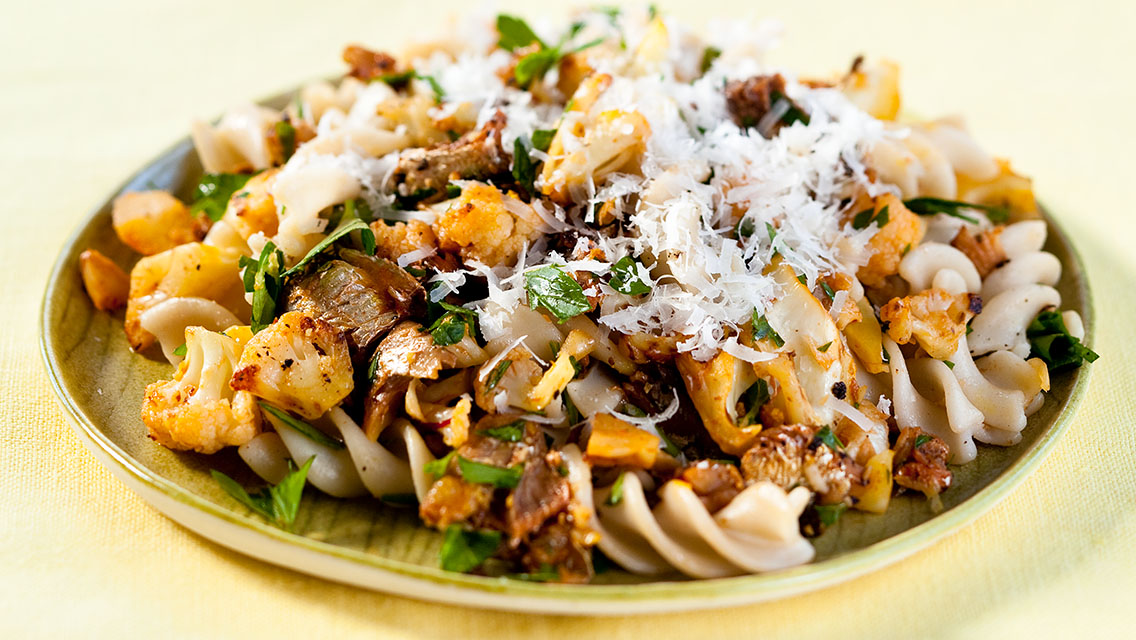
Makes | four to six servings
Ingredients
- 3 tbs. olive oil
- 4 cups finely chopped cauliflower, stems included (about 1/2 head of cauliflower)
- 2 to 3 cloves garlic, sliced
- 1/3 cup golden raisins, chopped and soaked in 1/4 cup warm water
- Pinch of saffron, soaked in 1 tbs. warm water
- 1 can (4.25 ounce) sardine fillets, drained
- 8 ounces gluten-free pasta, cooked
- 1 cup chopped fresh Italian parsley
- Salt and freshly ground black pepper (or crushed red chili flakes) to taste
- Zest and juice of one lemon
- 1/2 cup freshly grated Pecorino Romano cheese
Directions
- Heat olive oil in a large skillet over high heat and pan-roast the cauliflower until tender and golden brown. Add garlic, raisins, saffron and sardines.
- Cook and stir until the sardines break apart.
- Toss in the pasta and parsley and season with salt and pepper, lemon zest, and juice.
- Serve with Pecorino Romano cheese.
Cabbage Salad With Anchovy and Garlic Dressing
This salad subs cabbage for Romaine, creating a nice twist on the classic Caesar. Any variety of kale would also work well. For a heartier salad, try adding cannellini beans or chickpeas.
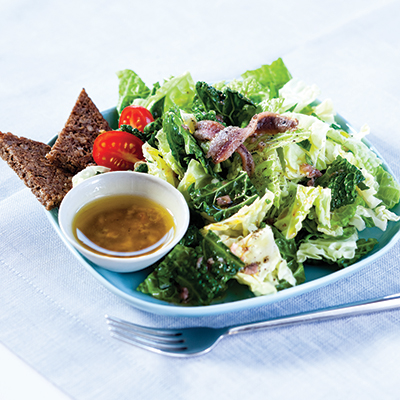
Makes | four to six servings
Ingredients
- 4 to 6 anchovy fillets
- 1 clove garlic, crushed in a garlic press
- 2 tbs. good-quality red-wine vinegar
- 1/4 cup extra-virgin olive oil
- Salt and freshly ground black pepper to taste
- 6 cups chopped (1-inch pieces) Savoy, Napa or green cabbage
- 1/2 cup chopped fresh Italian parsley
- Parmesan cheese, optional
Directions
- Mash the anchovies in the bottom of a salad bowl with garlic, vinegar, extra-virgin olive oil, and salt and black pepper to taste.
- Add the cabbage and parsley, and toss to coat evenly.
- Top with a grating of fresh Parmesan cheese if desired. Serve immediately.
Sardine Potato Cakes With Dill Yogurt Sauce
Made with sardines or kippers, these satisfying fish cakes make a nice meal when paired with a green salad.
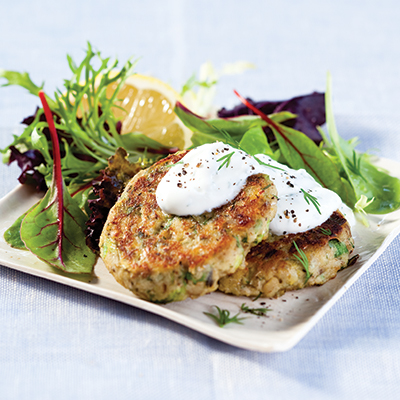
Makes | four to six servings
Ingredients
- 2 Yukon gold potatoes, cooked until tender, peeled and mashed
- 2 cans (4.25 oz. each) smoked sardines or kippers, drained and mashed
- 2 cloves garlic, pressed through a garlic press
- 3 scallions, minced
- 3 tbs. chopped fresh dill, divided
- Zest and juice of one lemon, separated, plus additional lemon wedges for garnish
- 1/2 cup quinoa flakes
- 2 eggs, lightly beaten
- Salt and freshly ground black pepper
- 2 tbs. extra-virgin olive oil for pan-frying the fish cakes
- 1 cup whole-milk Greek yogurt
Directions
- In a medium bowl, mash the potatoes and fish together. Add the garlic, scallions, half the dill, lemon zest, quinoa flakes, eggs, and salt and pepper, and then mix together until uniformly blended.
- Refrigerate mixture for 30 minutes and then shape into four to six patties.
- Heat olive oil in a cast-iron or nonstick skillet and pan-fry the fish cakes until golden brown and cooked through. Keep the fish cakes warm in a low oven while you prepare the remaining cakes.
- Make a simple sauce by mixing the remaining dill and lemon juice into the yogurt.
- Drizzle over the warm fish cakes and serve with lemon wedges.
Shirred Fisherman’s Eggs
It’s easy to customize this luscious dish. Substitute diced peppers or sautéed mushrooms for the tomatoes and scallions, try different herbs such as chives or marjoram, or add a little grated cheese on top of the cream.
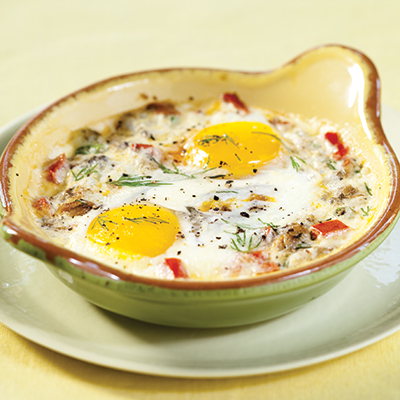
Serves | four
Ingredients
- 1 tin (3.5 ounce) kippers or sardines
- 1/2 cup tomato, diced
- 2 scallions, chopped
- 8 eggs
- 1/4 cup heavy cream
- 2 tsp. fresh chopped thyme or other fresh herbs
- Salt and freshly ground pepper to taste
Directions
- Preheat oven to 400 degrees F. Lightly butter four 6-ounce ramekins.
- Mix the fish, tomatoes and scallions together and divide the mixture equally amongst the dishes.
- Crack two eggs on top of the fish mixture in each ramekin.
- Drizzle 1 tablespoon cream over the eggs in each ramekin, then sprinkle some fresh thyme leaves and some salt and freshly ground black pepper on top.
- Bake at 400 degrees F until the eggs are no longer “jiggly,” about 10 minutes.
- Serve warm.
All of these recipes were created by Betsy Nelson (a.k.a. “That Food Girl”), a Minneapolis-based food stylist and recipe developer.
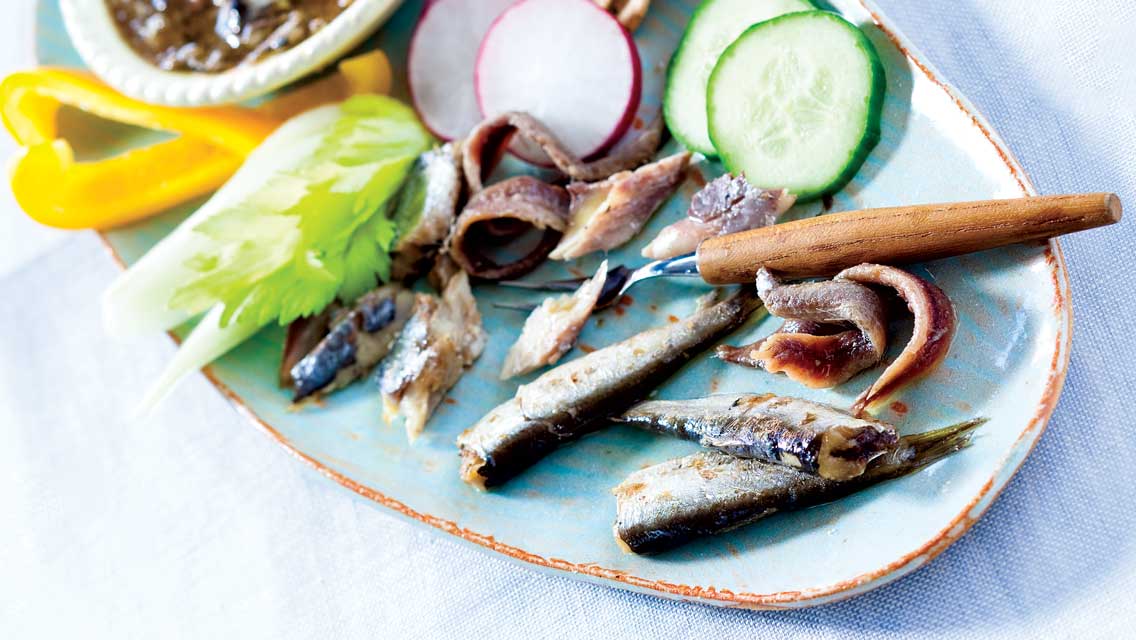
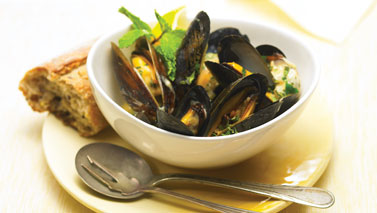

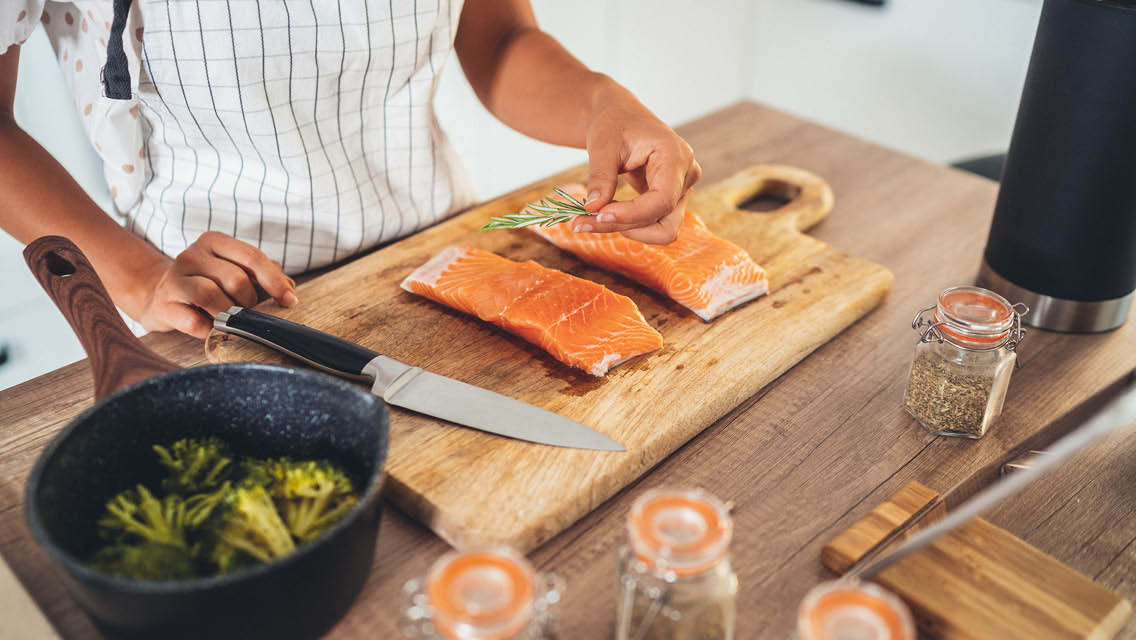
This Post Has 0 Comments